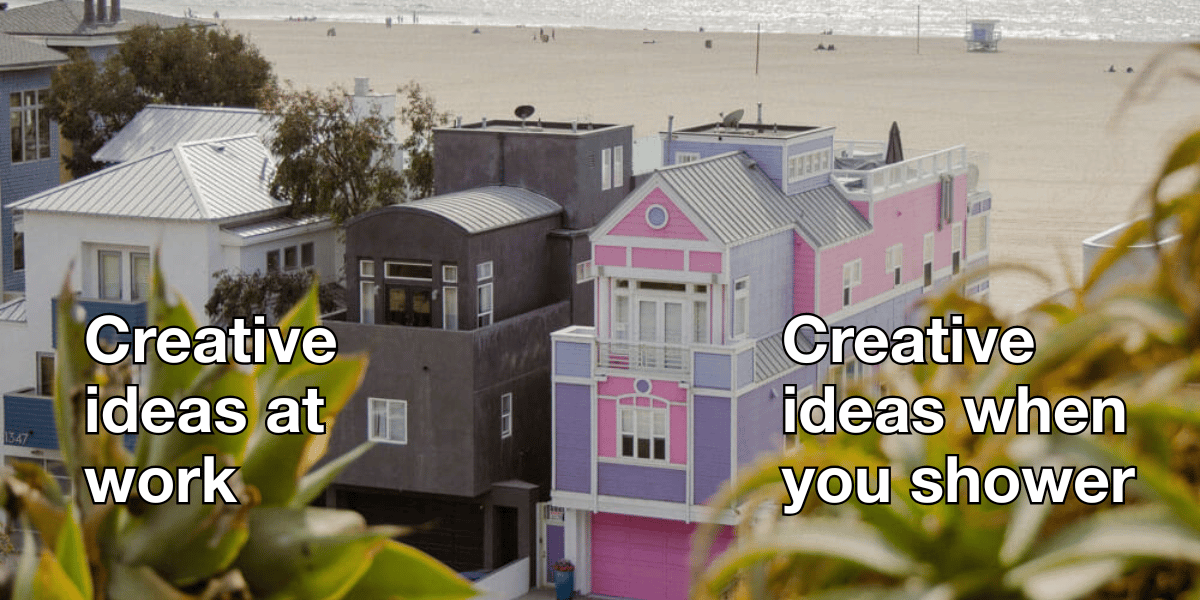- InBoXer
- Posts
- The Psychology of Choice: How to Make Your Product the Obvious Yes
The Psychology of Choice: How to Make Your Product the Obvious Yes
Ever been to a restaurant with a 15-page menu?
It’s overwhelming. You don’t order faster, you freeze. And if you do order, you wonder, Did I choose right?
This same thing happens in marketing all the time.
When we give our audience too many choices, or we fail to frame the right ones, they stall. They hesitate. They click away.
But there’s a better way. A smarter way.
It’s called Steering Choices + Contrasting Comparison.
Let’s break this down into something crystal clear.
Marketing ideas for marketers who hate boring
The best marketing ideas come from marketers who live it.
That’s what this newsletter delivers.
The Marketing Millennials is a look inside what’s working right now for other marketers. No theory. No fluff. Just real insights and ideas you can actually use—from marketers who’ve been there, done that, and are sharing the playbook.
Every newsletter is written by Daniel Murray, a marketer obsessed with what goes into great marketing. Expect fresh takes, hot topics, and the kind of stuff you’ll want to steal for your next campaign.
Because marketing shouldn’t feel like guesswork. And you shouldn’t have to dig for the good stuff.
Why People Struggle to Decide
Here’s the first thing to understand: People hate making decisions. It’s tiring. Risky. Emotionally taxing.
So what do most people do when faced with uncertainty?
They default to doing nothing.
That’s why the real goal of your email or landing page isn’t just to present your offer.
It’s to guide the reader to a conclusion that feels safe, smart, and easy.
Your Job: Frame the Choices So ONE Feels Inevitable
The human brain compares everything. We don’t evaluate offers in a vacuum. We weigh them against other options, even if those options aren’t mentioned.
So instead of letting your reader create their own mental comparisons (which might favor your competitors or inertia), you insert the comparison for them.
This is where Steering Choices and Contrasting Comparison come in.
Steering Choice: How It Works
You give your audience three options:
Option A: The “Default Loser” – the hard, risky, outdated, or inefficient route.
Option B: The “False Upgrade” – a better path, but with a huge downside (usually price or complexity).
Option C: Your product – the clear, sensible win.
Let’s use a real-world example.
Suppose you sell an email marketing platform for solopreneurs.
Your “Frame the Options” section could look like this:
You’ve really got three choices here:
✅ Option A: Keep patching together free tools that glitch, lose your contacts, and crush your deliverability. It kind of works… until it doesn’t.
✅ Option B: Hire an agency to manage your email marketing. They’ll charge $3,000–$5,000/month and still ask you to write the content.
✅ Option C: Use [Your Product]. It’s built for solopreneurs, easy to launch in a day, and gets you results, without the agency price tag or tech headaches.
See what just happened?
You guided them through the mental decision tree, then made your product feel like the only logical path forward.
Contrasting Comparison: Add More Weight to the Win
Now take it a step further.
Use contrast to reframe any weaknesses your product might have… and turn them into strategic advantages.
Example:
Some people say our tool doesn’t have every fancy feature the enterprise guys use. And they’re right.
But that’s exactly why our users love it. It’s streamlined. There’s zero clutter. You won’t spend weeks just learning how to use it. You’ll be sending profitable campaigns the same day you sign up.
This technique flips the script.
What someone might see as a limitation (“It’s not as powerful as the enterprise tools”) becomes the reason they should buy.
Why This Works So Well
You reduce friction. You’re not asking the reader to make a hard decision, they’re just choosing the most sensible of three.
You create emotional relief. Your product becomes the safe choice. No complexity. No huge investment. No fear of failure.
You control the narrative. Rather than letting the reader mentally compare your offer to some unknown, you set the terms of the comparison.
This eliminates confusion, and confusion kills conversions.
Try This Template in Your Next Email
Here’s a plug-and-play version you can use right now:
So here’s where you stand:
You can keep doing [undesirable behavior]. It’ll cost you [time/money/pain].
You can hire [expensive/complicated alternative]. It works, but it’ll drain your [budget/schedule/patience].
Or… you can try [your product]. Built for people just like you. Fast, affordable, and designed to deliver results without the hassle.
Want to make it even more powerful?
Add urgency: “And the best part? You can start seeing results by this time tomorrow.”
Or add identity: “This is for people who want to work smarter, not harder.”
Your Reader’s Brain: “Well Damn… That’s Obvious”
That’s what you want.
You want the reader to feel like they came to the decision on their own, but you paved the path.
It’s not manipulation. It’s clarity.
And clarity is what drives action.
The Wrap-Up
If your emails aren’t converting, there’s a good chance your offer isn’t framed clearly enough.
So stop pitching your product in isolation.
Start guiding the choice.
Present your offer in contrast to the frustrating, expensive, or outdated alternatives, so your reader naturally concludes:
“Why would I choose anything else?”
That’s how you win the sale, before they even hit the button.
Cheers
The InBoXer Team

